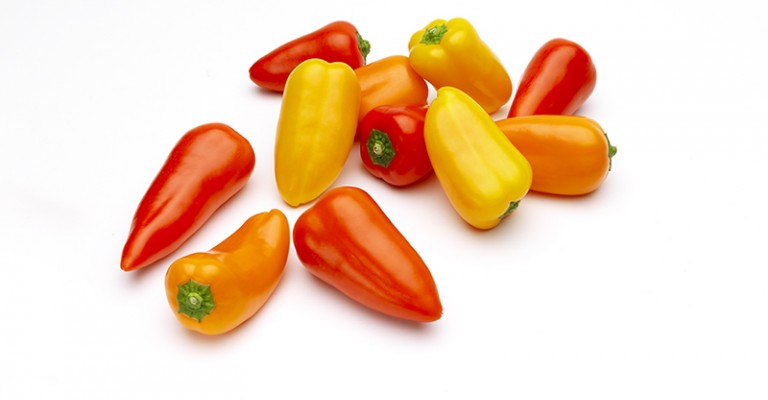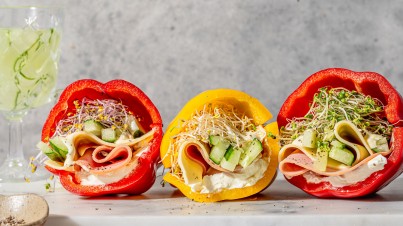Mini peppers are smaller versions of traditional capsicums, bell peppers, paprika and other sweet peppers. Part of the Solanaceae family, the early sweet pepper forms originated from Central and South America, developed from the wild bird pepper which is quite spicy. Fruit are usually multi-lobed internally with a small core seed cavity and a green attachment stem.
Cultivated into numerous forms with different colours and shapes, fruit are borne on low growing bushes that can also be trellised in greenhouses. Fruit can range in colour from red, yellow, orange, green, chocolate/brown, vanilla/white, and purple. Mostly all will begin as a green fruit with the colour developing as it ripens, with sweetness levels highest when at full maturity.
Typically these mini peppers are sweet, crunchy, and ideal as a delicious snack vegetable. They can be a sweet satisfaction to hunger for the young and old, or alternatively used in cooking, salads and many other culinary recipes.
How to prepare
Wash the mini peppers and pat dry. Cut in half lengthwise and remove the small core, then prepare as necessary.
Alternatively, trim off the top and remove the core, leaving the fruit whole and intact ready for stuffing.
Buyer's and storage guide
The peppers should be uniformly coloured and have an unblemished, glowing skin. Often they can be found in multi packs of different colours.
Ideally it is best not to store in the refrigerator, but can so if necessary. Kept in a cool place, they should stay fresh for about a week. Any cut portions should be stored in a sealed container in the fridge and used within a day or two.
Serving
- Eat the mini peppers whole and enjoy as a snack
- Create a stuffed pepper with rice, seafood or other vegetables and roast in the oven
- Enjoy sliced thinly into strips in a salad, or dice finely and made into a salsa
- Slice across the fruit to form little rounds to make canepes on crackers, or have kids make happy faced pizzas
- Try using in a soup for a vibrant coloured sweeter flavour

